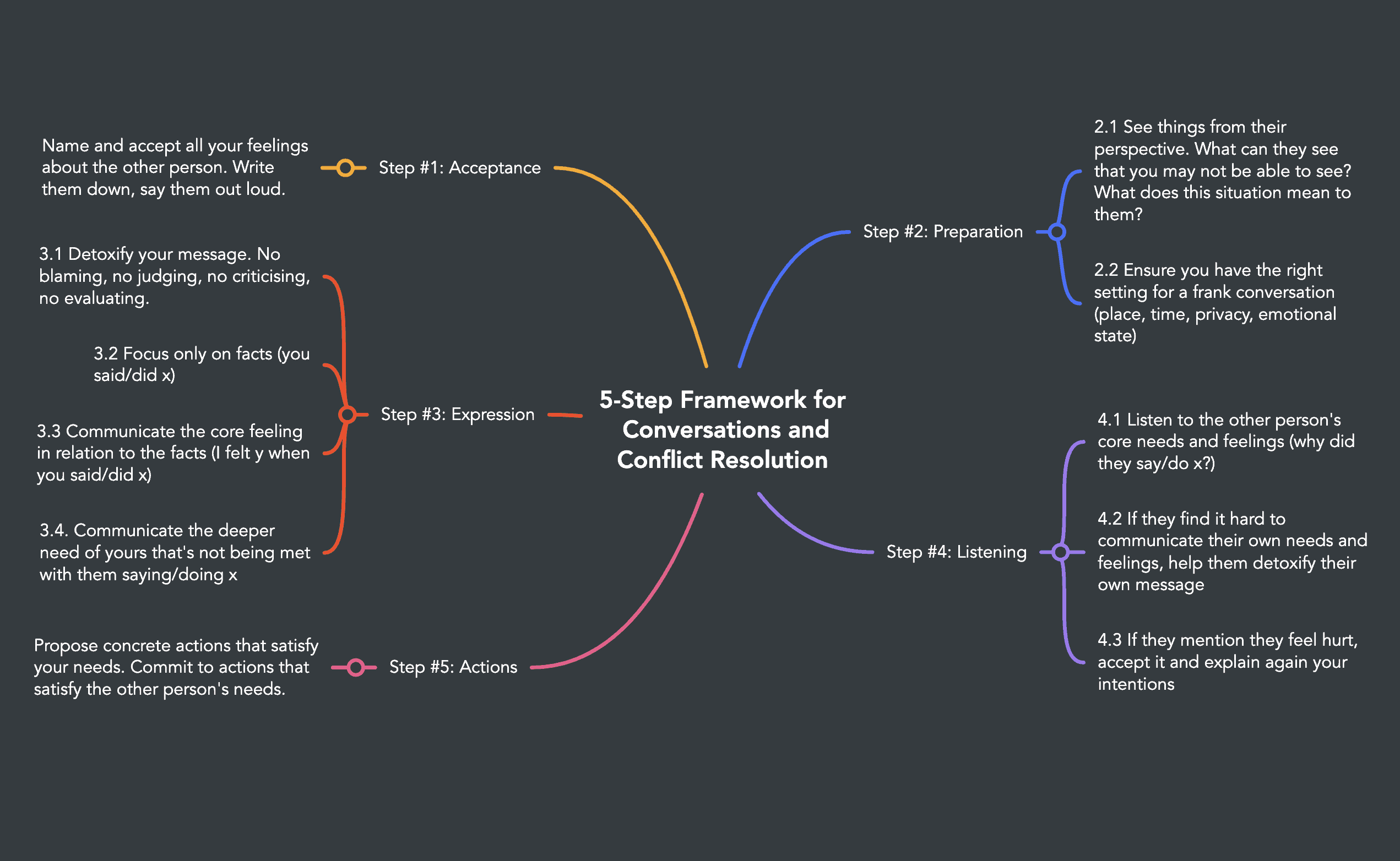Exceptional teams have conflict. Because the stakes are high. The people care and are running at full blast. Every conflict is a chance to strengthen and unite the team.
Before we dive in…
You guys are a bunch of stars who:
• are all experts in your fields
• speak different languages
• work in a non-academic environment probably for the first time
• left academia/research because you’re hungry for impact
Of course, you’ll have conflict! You MUST have conflict.
Conflict means different perspectives come in contact with each other.
A multidisciplinary team’s edge is in the conflict itself.
Can you debate openly and fiercely to tackle the complex problem you’re called to solve as a team?
This is how you’ll win! You’re the best in what you do. No one else in this company (or maybe outside the company) has the skills and knowledge you have.
You want recognition, you want glory. That’s okay. You deserve it.
But the only way to get all this is by helping the team to win. You’re not Google. You’re a small company fighting against all odds.
Your personal success is entirely tied to the team’s success. You can’t afford to prioritise yourself over the team even for a second.
If you’re really selfish, you have to put the team first! So how do you have a tough conversation?
How do you speak your truth without ruining the relationship?
Here is my 5-step framework with influences from psychology, neuroscience, nonviolent communication, NLP, and my love for the impact you’re here to create:
Step #1: Acceptance
Name and accept all your feelings. What are you feeling about the other person right now?
Frustration? Anger? Disappointment? Great. All feelings are welcome—and 100% valid. Allow them to be.
Write them down, say them out loud—embrace them.
Smart people use their brilliant brains to “think down” challenging emotions. Not only does this not work, but it also creates more friction!
Let your emotions do their thing and wash away. Use your brilliant brains to figure out the molecule, not to analyse your emotions!
Step #2: Preparation
Before the conversation…
2.1 – See things from their perspective.
What information do they have that you may not have? How may your actions have impacted them in a way outside your intentions? What does the situation mean to them?
2.2 – Ensure you have the right setting for the conversation.
Is the physical environment conducive? Do you have privacy? Do you have all the time you need? Are you both in a good state to have a frank discussion? Find a neutral place, a park, or a coffee shop.
Step #3: Expression
3.1 – Detoxify your message.
No criticising, no judging, no blaming, no evaluating. “You want all the glory for yourself! You always cut me off in the all hands.” These statements won’t get you what you want; they’ll make them reactive. Instead…
3.2 – Focus only on facts.
“You interrupted me twice in the meeting yesterday when I tried to express my concerns about the data. You promised to send a separate email about this to Sam and copy me in but you didn’t.”
3.3 – Communicate the core feeling in relation to what they said or did.
“I’m worried that we’ll waste our time and will have to do everything all over again. I’m afraid that if we miss deadlines, our investors will lose confidence in us.”
[Note: I wrote “in relation to” above because, WE are responsible for our own feelings—no one else! If we “hardwire” our feelings to the words or actions of others, we end up having zero agency, i.e. we give full control of our well-being to the other person.]
3.4 – Communicate your core need that is not being met.
“If there’s something wrong with the data, we have to address it now. We don’t have the time and money to run the experiment all over again. I want to make sure we’re on track for our next raise by Q2.”
So, what you want to communicate is not “you are rude and disrespectful” but “I am worried about x, I need y”.
This is how you help the other person see the impact of their actions—and then clarify, rectify, or help you get what you want.
Step #4: Listening
4.1 – Listen for the other person’s core needs and feelings.
“This is how I see things. Does it make sense? Tell me how you see things now or if there’s something I miss here.”
4.2. – If they get into a defensive or blaming mode, help them filter out the toxicity from their message.
“I see you’re frustrated, what were you trying to achieve by doing x? What makes you think that there’s no reason to worry here?”
4.3 – If they mention that they feel hurt/insulted/criticised, accept it and explain.
“I’m sorry to hear that you feel hurt. It was not my intention to hurt you.
I wanted to communicate my concerns to you about the quality of the data and see what you think.”
Step #5: Actions
Final step: Propose concrete actions.
“Can we meet for a couple of hours tomorrow morning to go through all the data before we prepare the report? Can you send an email to Sam to see what he thinks? What else do you need from me?”
Remember that every tough conversation is a hidden opportunity to strengthen a relationship. The more team members follow this process and manage to resolve issues, the more trust they build in one another.
